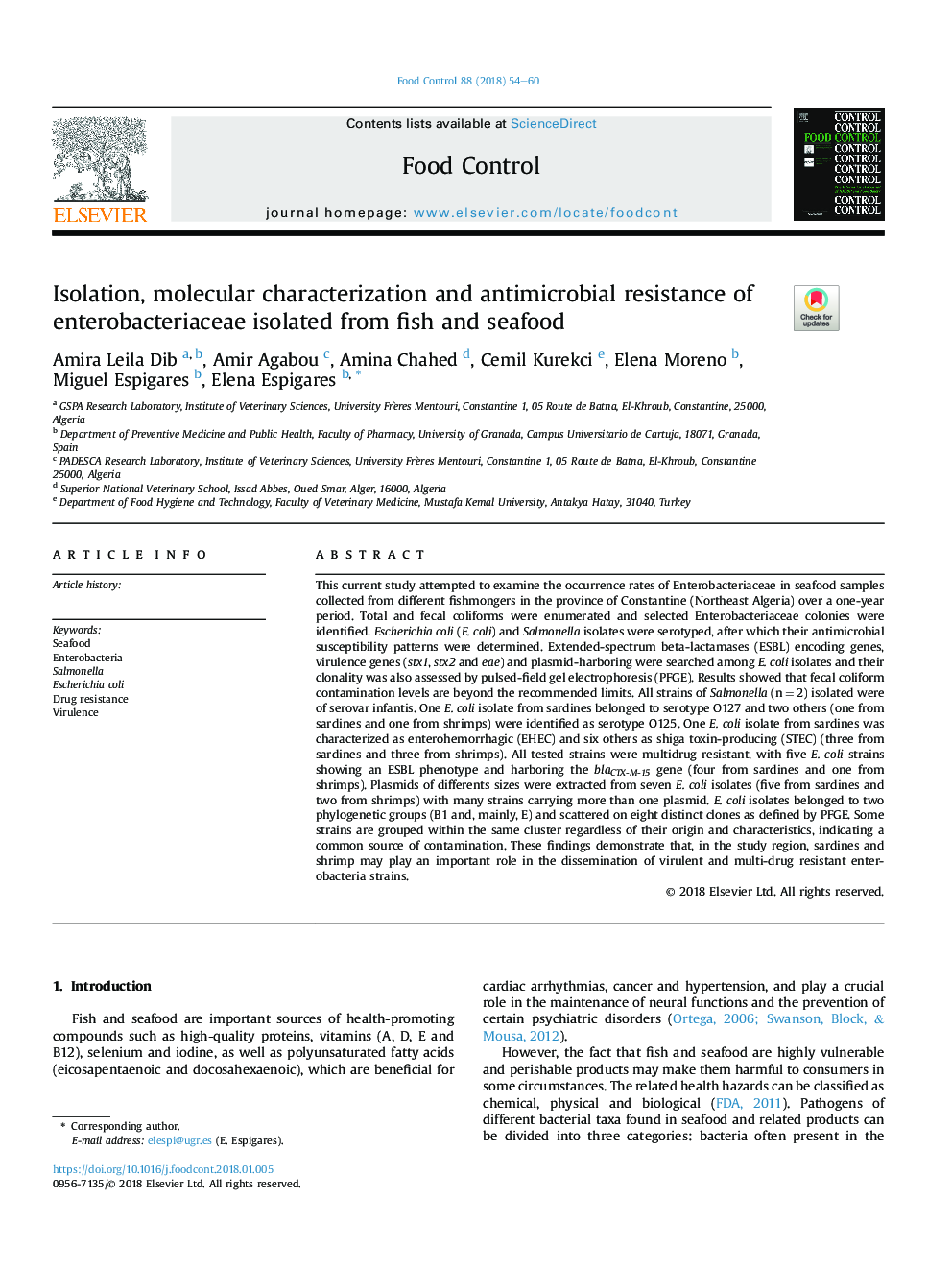| کد مقاله | کد نشریه | سال انتشار | مقاله انگلیسی | نسخه تمام متن |
|---|---|---|---|---|
| 8888021 | 1628376 | 2018 | 7 صفحه PDF | دانلود رایگان |
عنوان انگلیسی مقاله ISI
Isolation, molecular characterization and antimicrobial resistance of enterobacteriaceae isolated from fish and seafood
ترجمه فارسی عنوان
جداسازی، شناسایی مولکولی و مقاومت ضد میکروبی انتروکوکسی ها از ماهی و غذاهای
دانلود مقاله + سفارش ترجمه
دانلود مقاله ISI انگلیسی
رایگان برای ایرانیان
کلمات کلیدی
موضوعات مرتبط
علوم زیستی و بیوفناوری
علوم کشاورزی و بیولوژیک
دانش تغذیه
چکیده انگلیسی
This current study attempted to examine the occurrence rates of Enterobacteriaceae in seafood samples collected from different fishmongers in the province of Constantine (Northeast Algeria) over a one-year period. Total and fecal coliforms were enumerated and selected Enterobacteriaceae colonies were identified. Escherichia coli (E. coli) and Salmonella isolates were serotyped, after which their antimicrobial susceptibility patterns were determined. Extended-spectrum beta-lactamases (ESBL) encoding genes, virulence genes (stx1, stx2 and eae) and plasmid-harboring were searched among E. coli isolates and their clonality was also assessed by pulsed-field gel electrophoresis (PFGE). Results showed that fecal coliform contamination levels are beyond the recommended limits. All strains of Salmonella (nâ¯=â¯2) isolated were of serovar infantis. One E. coli isolate from sardines belonged to serotype O127 and two others (one from sardines and one from shrimps) were identified as serotype O125. One E. coli isolate from sardines was characterized as enterohemorrhagic (EHEC) and six others as shiga toxin-producing (STEC) (three from sardines and three from shrimps). All tested strains were multidrug resistant, with five E. coli strains showing an ESBL phenotype and harboring the blaCTX-M-15 gene (four from sardines and one from shrimps). Plasmids of differents sizes were extracted from seven E. coli isolates (five from sardines and two from shrimps) with many strains carrying more than one plasmid. E. coli isolates belonged to two phylogenetic groups (B1 and, mainly, E) and scattered on eight distinct clones as defined by PFGE. Some strains are grouped within the same cluster regardless of their origin and characteristics, indicating a common source of contamination. These findings demonstrate that, in the study region, sardines and shrimp may play an important role in the dissemination of virulent and multi-drug resistant enterobacteria strains.
ناشر
Database: Elsevier - ScienceDirect (ساینس دایرکت)
Journal: Food Control - Volume 88, June 2018, Pages 54-60
Journal: Food Control - Volume 88, June 2018, Pages 54-60
نویسندگان
Amira Leila Dib, Amir Agabou, Amina Chahed, Cemil Kurekci, Elena Moreno, Miguel Espigares, Elena Espigares,
